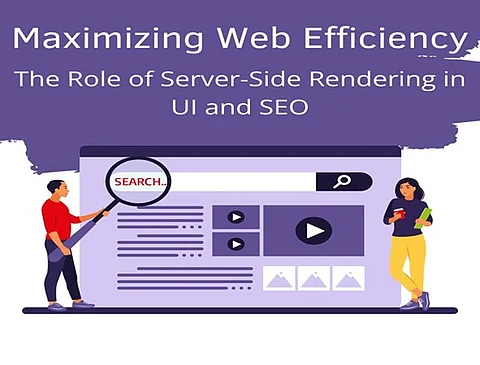

Server-Side Rendering (SSR) is changing the way web development is approached, offering faster content delivery and better accessibility for users while improving search engine optimization. By handling rendering on the server instead of the client, SSR creates a smoother and more efficient experience for both users and search engines. In this article, Karthik Vallamsetla, an experienced professional in web technologies, explores how SSR is shaping the future of web development by striking a balance between performance, scalability, and visibility online.
In today’s digital age, delivering fast and accessible content is essential for keeping users engaged. Server-Side Rendering (SSR) helps achieve this by generating web pages on the server instead of relying on the browser, resulting in noticeably faster load times. By preloading HTML and reducing dependence on JavaScript, SSR shortens the time it takes for pages to become fully interactive. This approach not only ensures smooth navigation but also improves accessibility for users with slower internet connections or less powerful devices, making the web more inclusive and efficient for everyone.
The speed and responsiveness of web applications are crucial for creating positive user experiences. Server-Side Rendering (SSR) improves responsiveness by enabling faster loading and smoother transitions, offering an engaging and seamless experience. For interactive platforms like e-commerce websites and data dashboards, SSR ensures that critical content is displayed almost instantly, reducing delays that might frustrate users. This quick content delivery helps lower bounce rates, increase engagement, and enhance overall user satisfaction. By prioritizing speed and usability, SSR addresses the high expectations of modern web users, ensuring smooth and effective online interactions.
Search engines favor websites that load quickly and provide meaningful content to users. Server-Side Rendering (SSR) helps improve search engine rankings by delivering fully-rendered HTML pages that are easy for crawlers to access. Unlike client-side rendering, which can delay or obscure important content, SSR ensures that crucial elements like metadata, keywords, and SEO tags are immediately visible. This enhances a site's indexability and relevance, leading to better visibility, increased organic traffic, and a competitive edge in the crowded digital landscape.
Server-Side Rendering (SSR) brings many advantages but also comes with its challenges. Developers often face the complexity of managing server infrastructure and maintaining code specifically for rendering. Striking the right balance between client-side and server-side rendering is crucial to avoid overloading the server and ensure smooth performance. Effective caching strategies are key to managing resources efficiently. Modern hybrid rendering frameworks offer a flexible solution, allowing developers to adapt rendering approaches based on user needs, device capabilities, and application requirements. This helps simplify implementation while maintaining scalability and delivering a seamless experience.
Scalability is essential for web applications serving large audiences and handling heavy traffic. Server-Side Rendering (SSR) addresses this challenge by pre-rendering only the most essential components, optimizing server resources and reducing unnecessary processing. This efficient use of bandwidth helps minimize server load, ensuring smooth performance even during peak usage. By focusing on delivering critical elements, SSR maintains excellent responsiveness and enhances user satisfaction, making it a reliable solution for scaling web applications without compromising the user experience.
With advancing technology, Server-Side Rendering (SSR) has emerged as a valuable strategy for businesses looking to enhance their digital presence and operational efficiency. Modern frameworks like React and Vue.js have made SSR easier to implement, allowing developers to deliver exceptional user experiences with minimal complexity. The future of SSR holds exciting possibilities, including AI-driven optimizations that improve performance and enable smarter server-side processing. These innovations open the door to personalized and adaptive web experiences, tailored to meet the unique needs of each user.
In conclusion, Server-Side Rendering (SSR) is a game-changer in web development, providing significant benefits in performance and search engine optimization. By ensuring faster load times and improved accessibility across various devices, SSR meets the growing expectations of modern users while supporting scalability and efficiency. Karthik Vallamsetla’s insights underscore the transformative potential of SSR, highlighting its pivotal role in shaping the future of web technologies and delivering user-focused, high-performing digital experiences.
